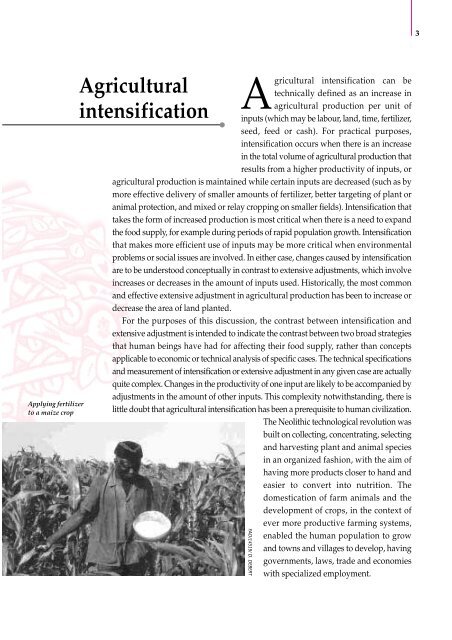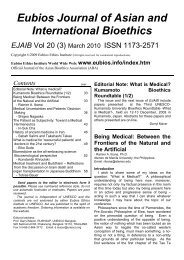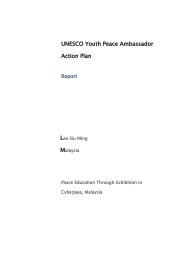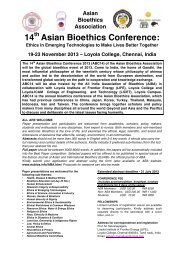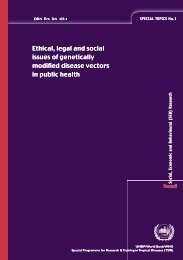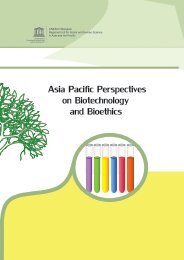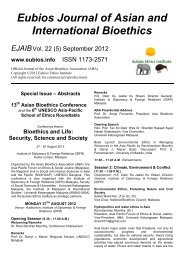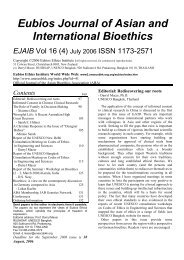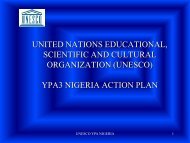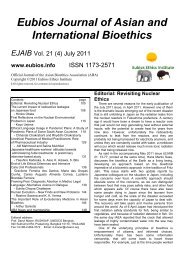3Applying fertilizerto a maize crop<strong>Agricultural</strong>intensification<strong>Agricultural</strong> intensification can betechnically defined as an increase inagricultural production per unit <strong>of</strong>inputs (which may be labour, land, time, fertilizer,seed, feed or cash). For practical purposes,intensification occurs when there is an increasein the total volume <strong>of</strong> agricultural production thatresults from a higher productivity <strong>of</strong> inputs, oragricultural production is maintained while certain inputs are decreased (such as bymore effective delivery <strong>of</strong> smaller amounts <strong>of</strong> fertilizer, better targeting <strong>of</strong> plant oranimal protection, and mixed or relay cropping on smaller fields). <strong>Intensification</strong> thattakes the form <strong>of</strong> increased production is most critical when there is a need to expandthe food supply, for example during periods <strong>of</strong> rapid population growth. <strong>Intensification</strong>that makes more efficient use <strong>of</strong> inputs may be more critical when environmentalproblems or social issues are involved. In either case, changes caused by intensificationare to be understood conceptually in contrast to extensive adjustments, which involveincreases or decreases in the amount <strong>of</strong> inputs used. Historically, the most commonand effective extensive adjustment in agricultural production has been to increase ordecrease the area <strong>of</strong> land planted.For the purposes <strong>of</strong> this discussion, the contrast between intensification andextensive adjustment is intended to indicate the contrast between two broad strategiesthat human beings have had for affecting their food supply, rather than conceptsapplicable to economic or technical analysis <strong>of</strong> specific cases. The technical specificationsand measurement <strong>of</strong> intensification or extensive adjustment in any given case are actuallyquite complex. Changes in the productivity <strong>of</strong> one input are likely to be accompanied byadjustments in the amount <strong>of</strong> other inputs. This complexity notwithstanding, there islittle doubt that agricultural intensification has been a prerequisite to human civilization.The Neolithic technological revolution wasbuilt on collecting, concentrating, selectingand harvesting plant and animal speciesin an <strong>org</strong>anized fashion, with the aim <strong>of</strong>having more products closer to hand andeasier to convert into nutrition. Thedomestication <strong>of</strong> farm animals and thedevelopment <strong>of</strong> crops, in the context <strong>of</strong>ever more productive farming systems,<strong>FAO</strong>/14519/ D. DEBERTenabled the human population to growand towns and villages to develop, havinggovernments, laws, trade and economieswith specialized employment.
4THE ETHICS OF SUSTAINABLE AGRICULTURAL INTENSIFICATIONAs agricultural production became more efficient, so populations increased.Historians have argued whether higher populations drove technological development,or whether technological development made higher populations possible.Nevertheless, throughout this development, most societies were chronicallymalnourished, or prey to episodic famine. Relatively high transport costs meant thatmost societies relied on local production, except when water transport made importspossible. Classical Athens was largely fed from the Crimea, and Rome from Egyptand southern Spain. For more than 95 percent <strong>of</strong> the history <strong>of</strong> civilization, food hasbeen scarce for nearly all people. This has meant low life expectancy, susceptibility todisease and little capacity to face wars, droughts, floods and other human and naturalcatastrophes. Food scarcity and social disorder brought about major migrations <strong>of</strong>people and caused wars and massive cultural disruption.Conversely, when scarcity was relieved, major cultural advances were made. About1 000 years ago, new varieties <strong>of</strong> rice were taken to southern China from the ChampaKingdom (now Viet Nam). These were not sensitive to photoperiod, and producedtwo crops a year instead <strong>of</strong> only one. When these varieties were grown, the intensivetechniques that had developed slowly in China to increase productivity per unit <strong>of</strong>land, although requiring more labour, resulted in dramatic production gains. Thesubsequent rice surplus triggered changes across various sectors <strong>of</strong> China’s economy,stimulating the construction <strong>of</strong> roads, canals, dams, ironworks, grain storage facilitiesand the production <strong>of</strong> weapons. For five centuries southern China experiencedsustained economic growth and had favourable trade terms for silk, spices andtechnology with late Mediaeval and early Renaissance Europe.The agricultural revolution in the early modern United Kingdom greatly increasedagricultural productivity. It relied heavily on techniques based on horse power, soilsupportingcrop rotations, land drainage and grazing systems, which were developedon the European continent in the very densely populated and <strong>of</strong>ten scarcity-riddenLow Countries (the present-day Benelux). When these innovations were applied tolarger areas at lower human population densities, a significant surplus was produced,which made the Industrial Revolution possible. At the same time, the harnessing <strong>of</strong>energy sources became more efficient. The late eighteenth century saw improved watermills and windmills, the use <strong>of</strong> sea coals and the development <strong>of</strong> steam engines.Transport costs fell, making it economically viable, for example, to ship bones longdistances for use in fertilizer. Internal combustion and hydropower later greatlyincreased returns to labour and the availability <strong>of</strong> products such as nitrogen fertilizers.However, any technology exists within a social and political system. The way thatthis British agricultural surplus was generated, controlled and distributed under therestrictive Enclosure Acts forced most <strong>of</strong> the rural population <strong>of</strong>f the land to serve asindustrial labour. The result was high food insecurity and a structural form <strong>of</strong> urbanpoverty, where families no longer had access to land or to traditional rights such as


